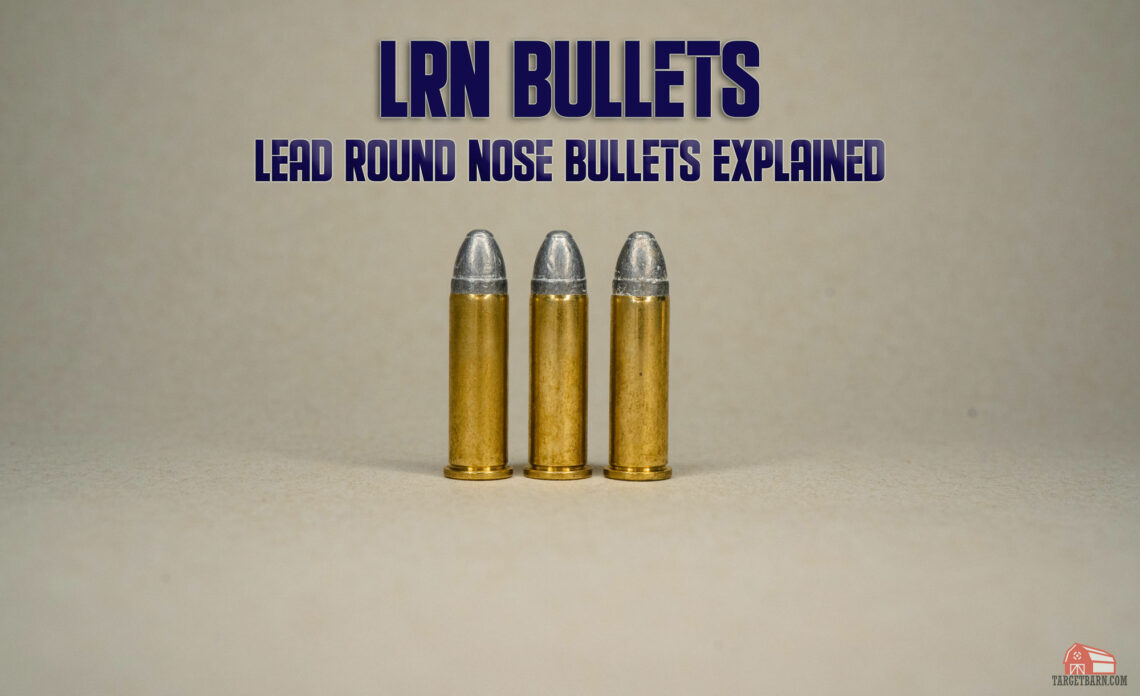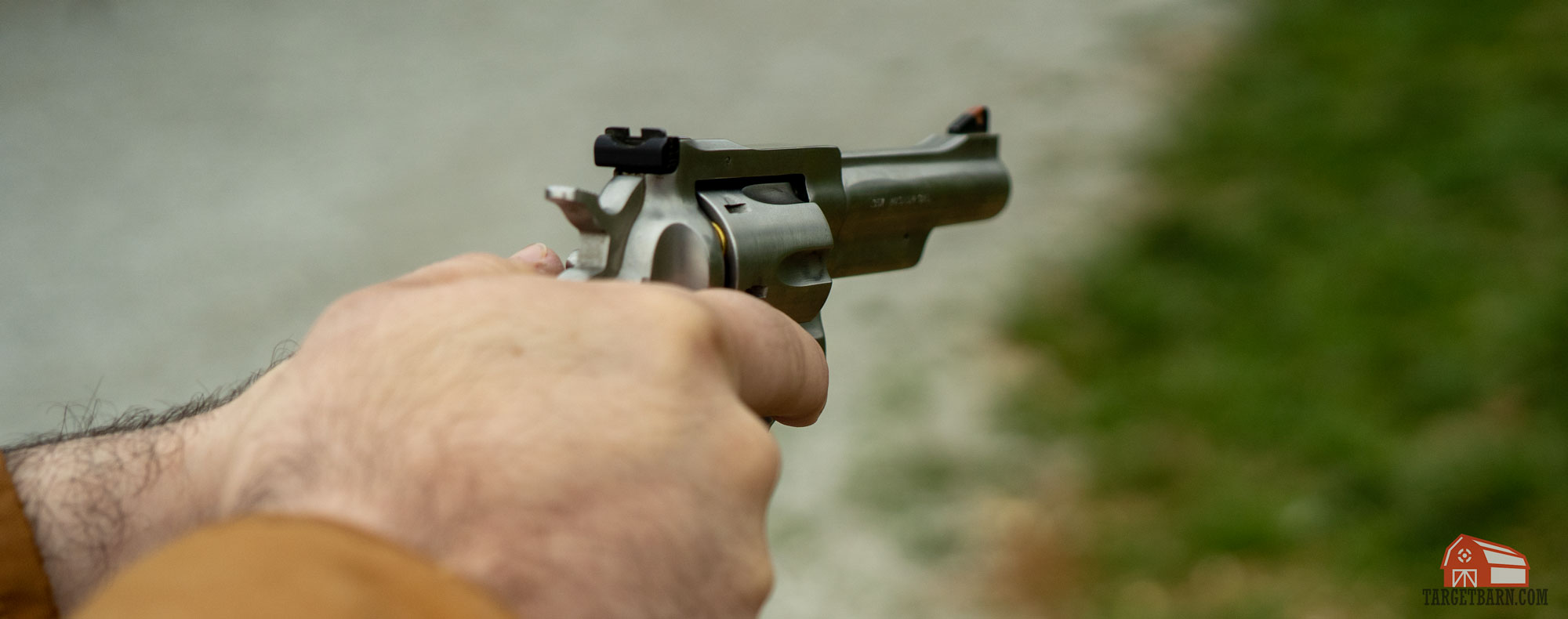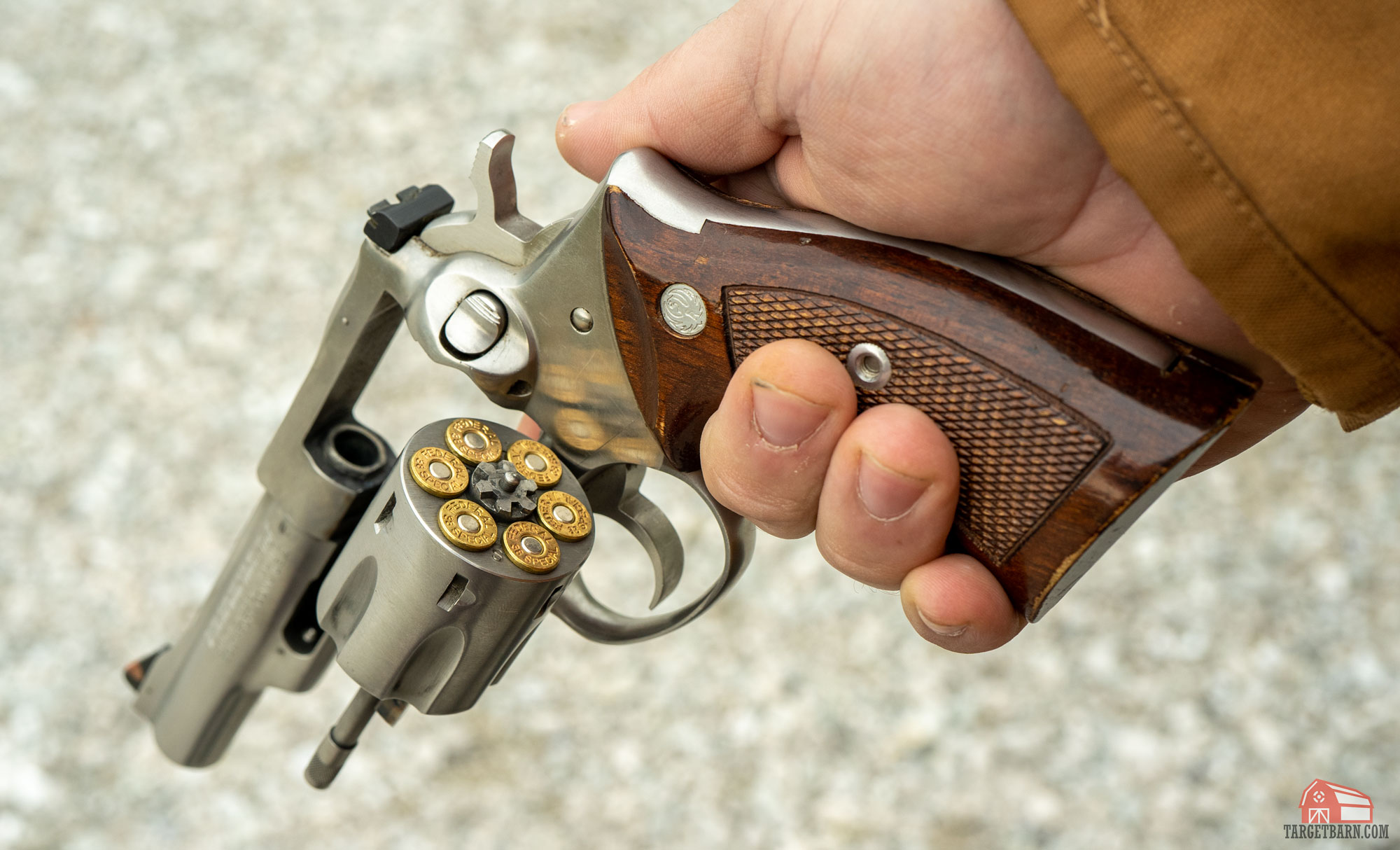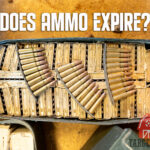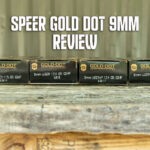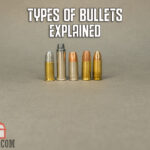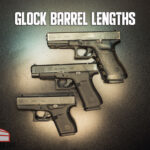A lead round nose bullet, shortened to LRN, is a solid lead bullet that tapers to a blunt, rounded nose profile. LRN bullets are the oldest bullet type, after the musket ball. Shooters most commonly use LRN bullets for target practice with revolvers and lever-action rifles.
LRN vs. FMJ Ammo

An LRN would be identical to a (full metal jacket) FMJ bullet if the FMJ’s jacket were completely removed.
Why does an FMJ have a jacket? Semi-automatic firearms rapidly feed cartridges into their chamber while firing. Semi-autos function more reliably with cartridges hardened by a gilding metal coating. This is why cartridges that were specifically designed for semi-autos, such as 9mm and 223 Rem, are almost exclusively loaded with jacketed bullets.
Why Doesn’t An LRN Bullet Have A Jacket?
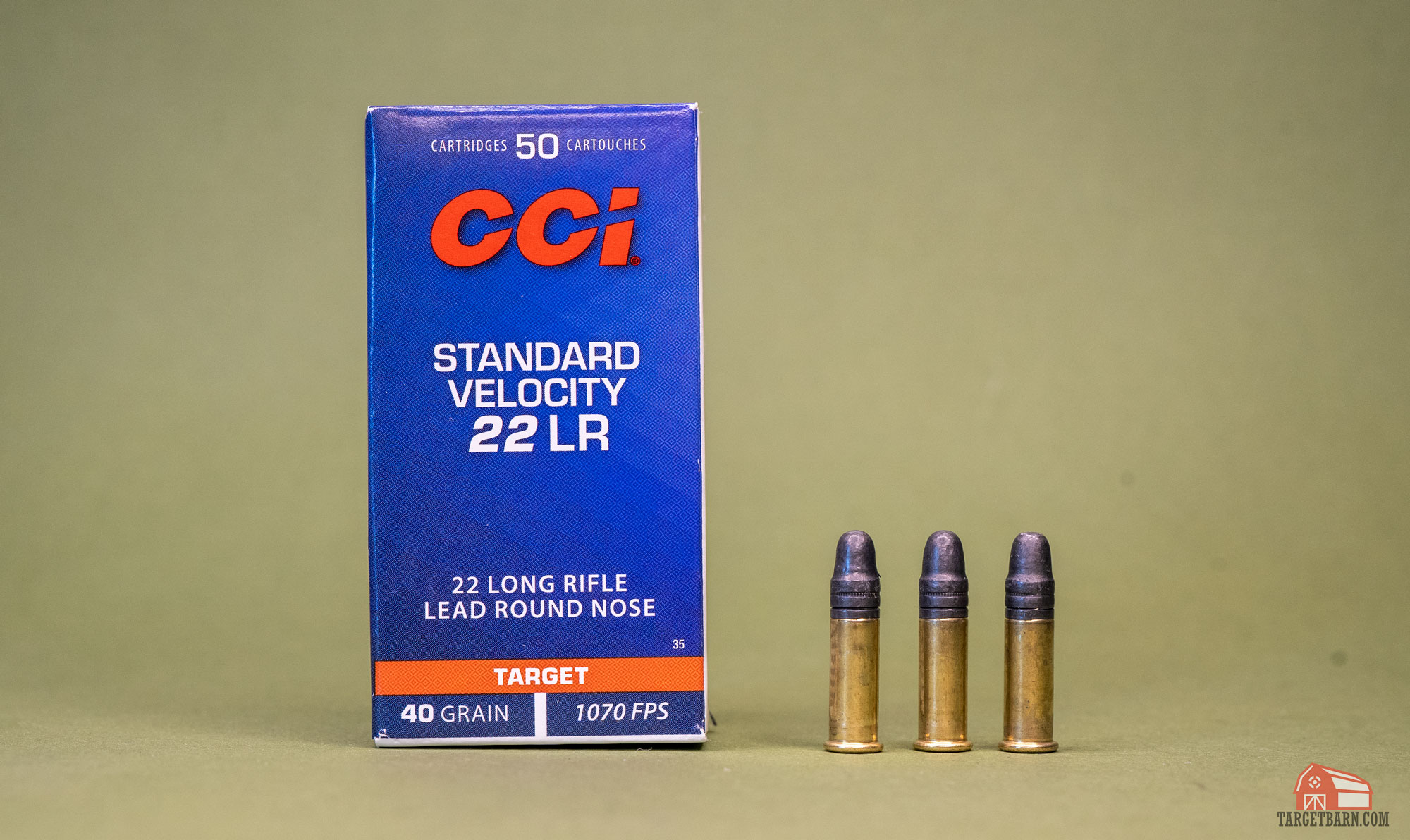
With some exceptions, shooters use LRN ammo almost exclusively for revolvers and lever-action rifles. Neither of these firearms have an automatic feeding mechanism. Functionality is not directly impacted if the bullet is harder than pure lead.
People often fire 22LR LRN ammo in semi-automatic pistols and rifles. These function reliably enough for training and target practice, as the alternative copper-plated round nose (CPRN) bullet, is not substantially harder.
Advantages of LRN Bullets

An LRN’s chief advantage is its lack of a jacket. Its absence of any copper makes an LRN less expensive to manufacture than an FMJ. That’s why LRN ammo has a slightly lower price tag.
Because they lack brittle copper jackets, LRN bullets are also less likely to cause splash-back when they hit a steel target or other hard surface, such as a rocky backdrop or concrete wall. In other words, an LRN cannot deflect small pieces of copper shrapnel back at the firing line when it hits a surface harder than itself. (Splash-back from lead shrapnel is still within the realm of possibility, however.)
Without a jacket to harden it, an LRN bullet is capable of some deformation as it penetrates soft tissue. It will not expand like a hollow point bullet. However, it may inflict a wider wound channel as it warps, increases in diameter, and tumbles around inside its target. Furthermore, an LRN’s round nose profile does still inflict a good amount of energy on impact, even if it can’t back up its terminal performance with expansion.
Disadvantages of LRN Bullets
An FMJ’s jacket doesn’t just promote smoother feeding in a semi-automatic. It additionally prevents the bullet’s soft lead core from making contact with the bore. In turn, this helps to prevent lead residue from accumulating on the rifling. As the result, the FMJ helps preserve a firearm’s ability to impart rotational stability to each subsequent bullet that it fires, thus keeping the firearm more accurate in between cleanings.
Because the LRN puts lead in full contact with the bore, it tends to leave behind more residue inside the barrel and accelerate the rate at which the firearm loses accuracy. Shooters won’t notice a steep decline, but it may become obvious after firing enough rounds.
As noted earlier, the LRN is not capable of terminal expansion. This fact makes it a less than ideal choice for hunting and personal protection. The LRN also contains lead, which will become aerosolized during ignition and linger around the shooter as toxic gas. In its defense, most FMJ bullets pose the same disadvantage. This is because the bases of their cores are not usually protected by their jackets.
Finally, the low cost of LRN ammo can be an indication of its quality. Manufacturers may exercise the least quality to control costs during their production. There is certainly high-quality LRN ammo on the market. However, be advised that extremely low-priced LRN ammo may fail to perform to your reasonable expectations.

